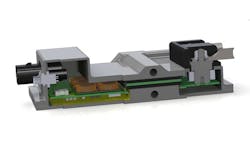Tap Online Design Tools To Improve Your Power Subsystem Designs
This file type includes high resolution graphics and schematics.
Historically, power components and their manufacturers competed largely on datasheet specifications and price. Power subsystem designs were mostly either discrete, one-off implementations that demanded substantial power-design expertise and effort or generic designs that supported rapid development but yielded less than optimal performance. Evolution in online design-support tools has broken this binary model and, in recent years, done so in ways that bring substantial value to system-design programs and mark an essential differentiator for power component providers.
Though critical from a system-design perspective, a power subsystem is an enabling function. Its design, therefore, is always under pressure to minimize space, thermal and mechanical complexity, and cost while maximizing efficiency, reliability, and power density—a balancing act not given to rapid design. Vendor-provided online design tools allow engineers to start developing and evaluating designs quickly, gaining critical insights into design alternatives and engineering tradeoffs, even in advance of sampling major power components.
On The Bench
You can, for example, share those early evaluations with other members of your project team, such as mechanical engineers, to help guide the system’s package and cooling designs early in the project’s schedule. Additionally, advanced online design tools embody component manufacturers’ technical expertise, reducing your design risk while shortening the design cycle. These traits essentially amplify your team’s design capability.
Related Articles
• With Today’s Design Tools, You Don’t Have To Copy Your Father’s Schematics
• Power-Aware Tools Complement Low-Power 32-Bit MCU
• Power Subsystem Controller Integrates Data Link
Conceptually the simplest tool, the interactive smart selector, can automatically identify power components that meet your design’s electrical, mechanical, and thermal requirements. Instead of providing only simple sorts and filters that apply to a single product line, smart selectors apply user-defined design criteria across the breadth of a component manufacturer’s portfolio and complete powertrain.
Integrated tool sets are not just interactive with you but also can interact with each other. For example, the solution selector in Vicor’s PowerBench online design toolset can drive data to both a component configurator and a simulator, speeding even highly detailed comparisons of candidate components and their associated application circuits.
A good online simulation tool allows you to investigate multiple aspects of a design’s performance. For example, Vicor’s PowerBench simulator provides seven simulation types: VIN startup, EN (enable) startup, EN shutdown, VIN step, load step, steady state, and thermal. The simulation interface allows you to manipulate component values in the application circuit, not just input and output requirements and operating conditions. Coupled with the broad range of available simulations, this capability provides several advantages.
First, it allows you to assess quickly multiple alternative designs. Next, it helps you minimize design risk by providing means to simulate external components over their tolerance range, which is particularly useful with regard to reactive components that tend to have wide initial tolerances and large temperature coefficients. And, it allows you to include lumped-equivalent impedances to model some layout parasitics, providing insight into your circuit’s sensitivity to those terms.
Online simulation tools also enhance your ability to scale a design as your product line expands, minimizing engineering re-investment and, potentially, inventory and material handling costs. Ready access to standard .igs and .stp files smoothes the way for both original and scaled designs through your company’s mechanical-engineering 2D and 3D software, supporting sophisticated and highly dense designs (see the figure).
The Results
The ability to simulate a powertrain over its expected operating temperature and, in particular, simulate its thermal performance is a distinct advantage. Such capability can speed integration of the power subsystem into the larger system design while helping to ensure first-time correctness.
The flexibility of various manufacturers’ thermal simulations varies, of course. For example, the Vicor simulator allows you to specify either heatsink or cold-plate cooling. Such flexible simulation configuration is important even in the case of highly efficient power management components. Remember, no matter how high a power subsystem’s efficiency, the thermal design still must accommodate the remaining heat loss dissipation. The strong historical trend has not been for increasing efficiency to alleviate thermal challenges but rather to increase power density, subject to the thermal design’s limitations.
Finally, the transient interaction an engineer has with any component manufacturer’s online design tools demands that the software exhibit a shallow learning curve. Despite this, the tools must be powerful enough to propel a design forward and provide useful insights into a power design’s performance.
This file type includes high resolution graphics and schematics.
About the Author
Stephen Oliver
Vicor Corp., Power Design
Stephen Oliver, vice president of Vicor’s VI Chip Product Line, has been in the electronics industry for 18 years, with experience in applications engineering, product development, manufacturing, and strategic product marketing in the ac-dc, telecom, defense, processor power, and automotive markets. Previously with International Rectifier, Philips Electronics, and Motorola, he received a BSEE degree from Manchester University, the U.K., and an MBA in global strategy and marketing from UCLA. He holds several power electronics patents as well.



